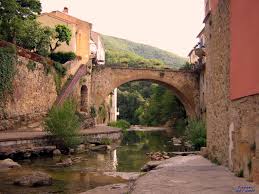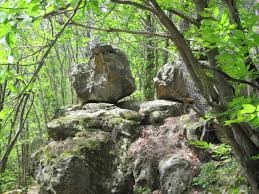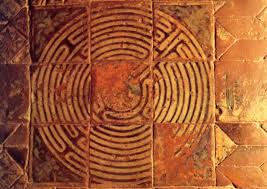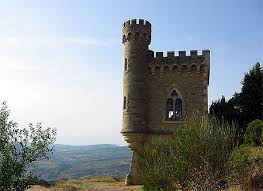Part 6 (Finale)
Day 6 – Saturday 12th Oct 2013
Limoux – Notre Dame de Marceille
Saturday was a day of cloudless sunshine and we decided not to be too ambitious but to spend the morning at one place: the church of Notre Dame de Marceille in Limoux.
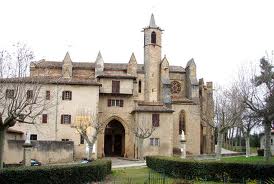
There is not much in the way of official history of this impressive building; other than it seems to date from the 14th and 15th centuries and is in the Gothic style. It’s on the Sacred Feminine tour map of the region because of its famous Black Madonna and its sacred well, reputed to have miraculous healing properties.
There are many churches in the region called “Notre Dame”, which would have been assumed by the Vatican to be dedicated to The Virgin Mary. But was “Our Lady” sometimes the other Mary – especially in this region where she is reputed to have lived? And what about the mysterious Black Madonnas, what are they all about? The Vatican doesn’t like to talk about them and they are thought by some historians to be a continuum of the images of Isis holding her son Horus, thus pre-dating Christianity altogether.
We made our way to Limoux after cooking ourselves a leisurely full-English breakfast and when we found Notre Dame de Marceille we soon saw that apart from us three, the site was tourist-free. We were so privileged on this trip at every single site we visited to have this extraordinary peace and quiet to soak up the atmosphere and energy.
The church is very large, almost like a mini-cathedral. The interior is absolutely beautiful, obviously much-loved and recently restored – like a bigger version of the lovely little church of Rennes-le Chateau.
I made a beeline for the Black Madonna, now incarcerated behind a heavy iron grille due to having been stolen in the past. Here she is:

Photographs are always disappointing – in photos I think she looks like a slightly tacky child’s doll and it can be hard to understand why she is a sacred object of veneration. But the three of us stood around in the deep silence, with the sunshine slanting in through the stained glass windows – and I am now seriously challenged to find the words to describe our experience. Afterwards Jenny and I agreed that we both had been deeply and emotionally moved – to actual tears – by the energy in this place. Claire likewise was in awe of the powerful energy we felt there.
I’m not even sure how much time we spent in there, but after we’d had our fill we wandered out into the sunshine to seek out the alleged healing well.
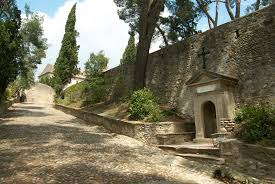
As we sat in the sun on the stone seat by the well we noticed movement in the nearby pine trees. A glossy red squirrel appeared a few feet away running down the trunk of a pine tree. Her mate followed her and they scurried up and down the trees collecting winter nesting material. They seemed strangely unbothered by our presence and we were able to enjoy quietly watching them for a good ten or fifteen minutes.

They were the only squirrels we ever saw during our week, so again this felt like a special moment; another gift from the Great Mother. Interestingly, as we watched them bustling around there was a sudden commotion as a huge buzzard swooped towards them from the meadows beyond the pine trees. He missed by inches, and the squirrels didn’t even seem to notice him but carried on about their business.
I’m still pondering on the meaning of that episode (it being my belief that nothing in the universe is random) and what the symbolism might be. The most obvious interpretation would be the relentless attacks of the Patriarchy on the Feminine.
A unanimous decision was made to spend the remainder of this perfect day lying in the glorious sun (storing it up for the winter) by our pool and reflecting on the morning’s experience.
Day 7 Sunday 13th October 2013
Minerve
Our final pilgrimage was to be to the spectacular village of Minerve, a nearly two hour drive away to the North East of Carcassonne.

Minerve perches on a limestone outcrop surrounded by a deep gorge on two sides, filled with two converging rivers in winter and almost totally dry in summer. The village is another picture-perfect medieval jumble of pale-grey stone, and is on the tourist map big-time. Even so, on such a sunny Sunday the place was not too crowded; cars are banned in the village, and we enjoyed wandering the usual maze of tiny streets, looking at art galleries and restaurants with gorgeous views.
Our reason for pilgrimage was partly that it was in antiquity named for its temple to the Goddess Minerva, and also once again to connect with the story of the Cathars. In 1210, when it was a Cathar stronghold, the infamous Simon de Montfort besieged the town for ten weeks, and he and his troops and their catapults won. When Minerve finally surrendered, the Cathars still would not give in, and so 140 of them were burned on the village square. Legend tells they leaped into the fire, singing.
You can find out all about what happened in the village museum – but we were not at all fascinated by the details of the siege. We were looking for the curator of the museum to check out the rumour that if you asked her very nicely she would fetch the key of the always locked church and give you a private viewing. (It was a proud moment for me as I made our request entirely in French). Sure enough, she agreed on condition that we all paid the museum entry price, and after we waited for some other tourists to finish looking at the exhibits, she locked up the museum and took us outside and around the corner to the church.
In the picture you can see the ancient church wall to the right, and the monument on the left, “The Dove of Minerve”, which was made by a local sculptor in recent years to commemorate the martyrdom of the Cathars. He is quoted to have said the best way to represent the peace for which they stood was to make the dove shape “out of light”.

The church was beautiful in its ancient simplicity. There are two Roman altars in it; one claimed to be the oldest altar in Europe. I wondered if this altar pre-dated Christianity, and therefore, being Roman, what exactly it had been used for. The attentive lady from the museum was full of informative chat and it was difficult to tune in to the feeling of the place properly.
The day was amazingly hot for mid-October and we didn’t have the energy to explore the surrounding area to locate the dolmens we’d heard about. Instead we opted for a picnic lunch and to get the long drive back to our house over with so we could spend what was left of our last afternoon in France meditating (okay there might have been some snoozing) in the sunshine by our peaceful pool, before flying home to England the next morning.
On our way back to the car we passed The Candela, a tall octagonal tower which is the last remaining ruin of the ancient fortifications of Minerve. How cheering to observe this symbol of war and oppression now abundantly colonised by swifts which nestled in every crevice among the wildflowers that also now adorn the old stones. Clouds of birds swooped around the tower and our heads, filling the air with their squeals.

You can just make them out below sitting on the ledges.

I guess you can always rely on the Great Mother to have the final word.

